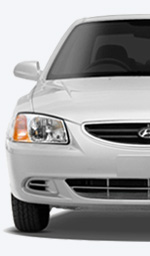 printable version printable version
Manual Transmission
Position the shift lever is traditional for the five forward gears, as shown in the figure.
A warning  When reverse gear is engaged, the vehicle is stopped, hold the gear lever at least 3 in a neutral position. After that, move the lever to reverse gear. When reverse gear is engaged, the vehicle is stopped, hold the gear lever at least 3 in a neutral position. After that, move the lever to reverse gear.
 By switching the lever from position 5th gear position 4th gear, be careful not to include the second gear by mistake. Such an abrupt gear changes can cause an excessive increase in the frequency of engine speed (tachometer needle in the red zone), and may damage the engine. By switching the lever from position 5th gear position 4th gear, be careful not to include the second gear by mistake. Such an abrupt gear changes can cause an excessive increase in the frequency of engine speed (tachometer needle in the red zone), and may damage the engine.
Using the clutch
Before turning the gear fully depress the clutch pedal and then slowly let her go. Pressing the clutch pedal must be carried out only after its return to its original position. Do not keep your foot on the clutch pedal while driving. This can lead to clutch wear. Do not use the clutch to hold the car on an incline. To do this, you must use the parking brake. Avoid sudden and repetitive releasing the clutch pedal. Receptions correct driving
Do not roll downhill in neutral gear. It is very dangerous. Always keep the transfer included.
Do not have a habit of driving in which the brake abruptly falls, and do not hold your left foot on the brake pedal continuously while driving. This leads to overheating and loss of braking effectiveness. On the downhill to prevent overheating of the brakes should be applied engine braking (including downshifts).
When the downshift, slightly slow down the car. This will help prevent an excessive increase in the engine speed of the engine, which can damage it.
If a strong crosswind reduce speed of the vehicle. This will improve its handling.
Before switching on the reverse gear, make sure the vehicle is completely stopped. Otherwise, you may damage the transmission. To put the lever into reverse, first depress the clutch pedal, move the lever to neutral, wait 3 seconds, and then move the lever to reverse position.
Be especially careful when driving on a slippery road, during braking, acceleration and gear changes. On a slippery surface, a sharp change in vehicle speed can cause you to lose traction with the road and lost control of the vehicle.
A warning  If you lose control of the vehicle at high speeds significantly increases the risk of rollover. If you lose control of the vehicle at high speeds significantly increases the risk of rollover.
 Loss of control often occurs when two or more wheels and off the track of the road and the driver tries to return the vehicle back on the road. Loss of control often occurs when two or more wheels and off the track of the road and the driver tries to return the vehicle back on the road.
 If your car ran off the track of the road, avoid sudden steering. Instead, slow down the vehicle before re-enter the road. If your car ran off the track of the road, avoid sudden steering. Instead, slow down the vehicle before re-enter the road.
To remove the key from the ignition lock
| PERFORMANCE ORDER | | 1. Turn the ignition key to the "ACC" ("Options"). | | 2. Press and turn the ignition key counter-clockwise from the "ACC" ("Options") to "LOCK" ("Lock"). | | 3. The ignition key can be removed from the lock only in position "LOCK" ("Lock"). |
|
The recommended speed for gear
For economical driving is recommended to change gears at the following speeds.
Broadcast | Recommended speed | from the 1st to the 2nd or 2nd to the 1st | 20 km / h | from 2nd to 3rd or 3rd to 2nd | 40 km / h | with the 3rd to the 4th or 4th to 3rd | 55 km / h | from the 4th to the 5th, or 5th to 4th | 75 km / h |
|







